Information injection-pump assembly
BOSCH
9 400 614 052
9400614052
ZEXEL
101405-3090
1014053090
KOMATSU
3863871
3863871
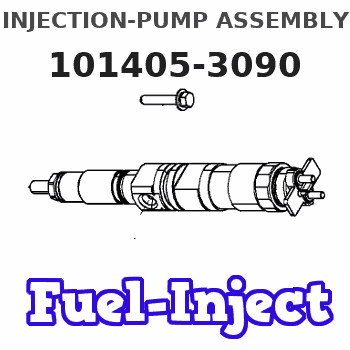
Rating:
Service parts 101405-3090 INJECTION-PUMP ASSEMBLY:
1.
_
5.
AUTOM. ADVANCE MECHANIS
6.
COUPLING PLATE
7.
COUPLING PLATE
8.
_
9.
_
10.
NOZZLE AND HOLDER ASSY
11.
Nozzle and Holder
12.
Open Pre:MPa(Kqf/cm2)
21.6{220}
13.
NOZZLE-HOLDER
14.
NOZZLE
15.
NOZZLE SET
Cross reference number
BOSCH
9 400 614 052
9400614052
ZEXEL
101405-3090
1014053090
KOMATSU
3863871
3863871
Zexel num
Bosch num
Firm num
Name
101405-3090
9 400 614 052
3863871 KOMATSU
INJECTION-PUMP ASSEMBLY
S4D102E K
S4D102E K
101405-3090
9 400 614 052
6732711281 KOMATSU
INJECTION-PUMP ASSEMBLY
S4D102E K
S4D102E K
Calibration Data:
Adjustment conditions
Test oil
1404 Test oil ISO4113 or {SAEJ967d}
1404 Test oil ISO4113 or {SAEJ967d}
Test oil temperature
degC
40
40
45
Nozzle and nozzle holder
105780-8140
Bosch type code
EF8511/9A
Nozzle
105780-0000
Bosch type code
DN12SD12T
Nozzle holder
105780-2080
Bosch type code
EF8511/9
Opening pressure
MPa
17.2
Opening pressure
kgf/cm2
175
Injection pipe
Outer diameter - inner diameter - length (mm) mm 6-2-600
Outer diameter - inner diameter - length (mm) mm 6-2-600
Overflow valve
131424-3420
Overflow valve opening pressure
kPa
255
221
289
Overflow valve opening pressure
kgf/cm2
2.6
2.25
2.95
Tester oil delivery pressure
kPa
157
157
157
Tester oil delivery pressure
kgf/cm2
1.6
1.6
1.6
Direction of rotation (viewed from drive side)
Right R
Right R
Injection timing adjustment
Direction of rotation (viewed from drive side)
Right R
Right R
Injection order
1-3-4-2
Pre-stroke
mm
2.5
2.45
2.55
Beginning of injection position
Drive side NO.1
Drive side NO.1
Difference between angles 1
Cal 1-3 deg. 90 89.5 90.5
Cal 1-3 deg. 90 89.5 90.5
Difference between angles 2
Cal 1-4 deg. 180 179.5 180.5
Cal 1-4 deg. 180 179.5 180.5
Difference between angles 3
Cyl.1-2 deg. 270 269.5 270.5
Cyl.1-2 deg. 270 269.5 270.5
Injection quantity adjustment
Adjusting point
A
Rack position
9.7
Pump speed
r/min
1100
1100
1100
Average injection quantity
mm3/st.
93.5
92.5
94.5
Max. variation between cylinders
%
0
-2.5
2.5
Basic
*
Fixing the lever
*
Injection quantity adjustment_02
Adjusting point
-
Rack position
7.1+-0.5
Pump speed
r/min
450
450
450
Average injection quantity
mm3/st.
10
9
11
Max. variation between cylinders
%
0
-15
15
Fixing the rack
*
Remarks
Adjust only variation between cylinders; adjust governor according to governor specifications.
Adjust only variation between cylinders; adjust governor according to governor specifications.
Injection quantity adjustment_03
Adjusting point
D
Rack position
-
Pump speed
r/min
100
100
100
Average injection quantity
mm3/st.
90
90
100
Fixing the lever
*
Rack limit
*
Test data Ex:
Governor adjustment
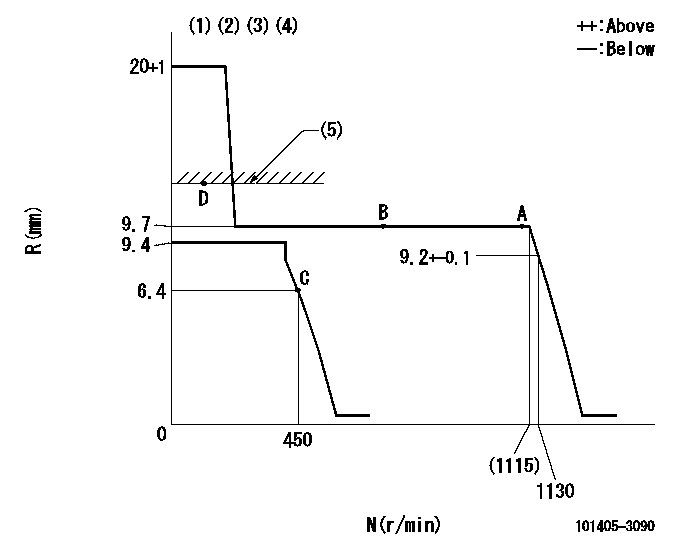
N:Pump speed
R:Rack position (mm)
(1)Target notch: K
(2)Tolerance for racks not indicated: +-0.05mm.
(3)The torque control spring does not operate.
(4)Adjust the secondary timing before adjusting the governor.
(5)RACK LIMIT
----------
K=15
----------
----------
K=15
----------
Speed control lever angle
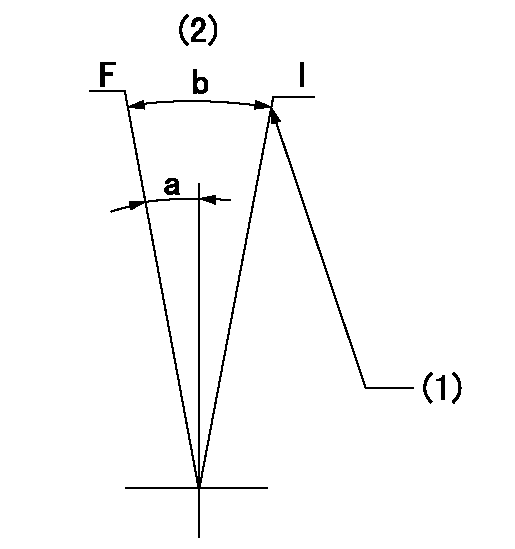
F:Full speed
I:Idle
(1)Stopper bolt setting
(2)Use the center hole at R = aa
----------
aa=80mm
----------
a=18deg+-3deg b=35deg+-5deg
----------
aa=80mm
----------
a=18deg+-3deg b=35deg+-5deg
Stop lever angle
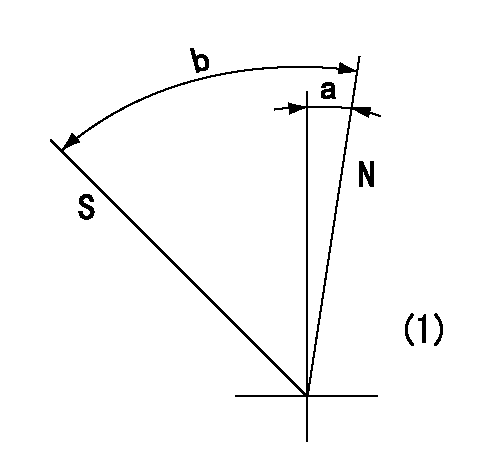
N:Pump normal
S:Stop the pump.
(1)No return spring
----------
----------
a=0deg+-5deg b=53deg+-5deg
----------
----------
a=0deg+-5deg b=53deg+-5deg
Timing setting
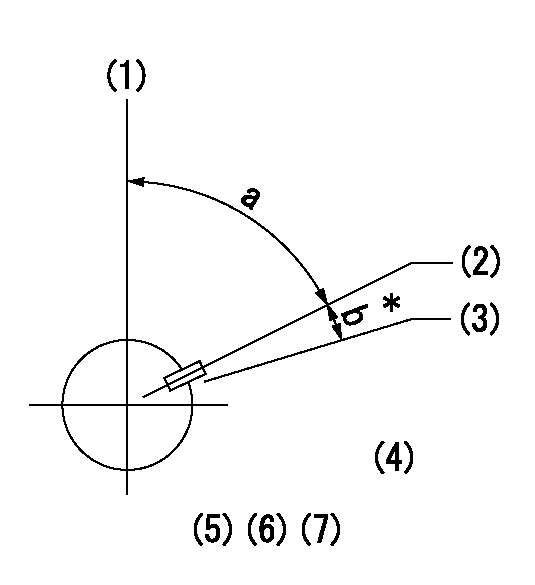
(1)Pump vertical direction
(2)Key groove position at No. 1 cylinder's beginning of injection position (at BTDC: aa).
(3)Position of the key groove of the No. 1 cylinder at B.T.D.C. bb (fix the governor flyweight at this position for delivery).
(4)B.T.D.C.: aa
(5)At second timing adjustment, set the camshaft at the * position and tighten the flyweight locknut.
(6)Align the flyweight's timing gear position with the lockpin groove and then fully tighten the flyweight to the camshaft.
(7)Remove the lock pin and adjust the governor. Reinstall the lock pin to fix the flyweight for delivery.
----------
aa=16deg bb=0deg
----------
a=54deg54min+-3deg b=8deg+-30min
----------
aa=16deg bb=0deg
----------
a=54deg54min+-3deg b=8deg+-30min
Information:
Fuel Recommendations
Caterpillar Diesel Engines are capable of burning a wide range of distillate fuels. The use of clean, stable blends of distillate fuel which meet the following requirements will provide quality engine service life. The fuels recommended for use in Caterpillar engines are normally No. 2-D diesel fuel and No. 2 fuel oil, although No. 1 grades are acceptable. The following fuel specifications are some of the worldwide fuels which also meet the requirements. The following fuel characteristics should be considered when procuring fuel for use in Caterpillar diesel engines.Cetane Number
The minimum cetane number required for average starting conditions for the direct injection engine is 40. A higher cetane value may be required for high altitude operation or cold weather starting.Filterability
Clean fuels should have no more than 0.1% of sediment and water. Storage of fuel for extended periods of time can cause fuel oxidation with solids forming, causing filtering problems.Pour Point
The pour point of the fuel should be at least 6°C (10°F) below the lowest ambient temperature at which the engines must start and operate. The lower pour point of No. 1 or No. 1-D fuel may be necessary in extremely cold weather.Cloud Point
The cloud point should be below the lowest ambient temperature at which the engines must start and operate to prevent the fuel filter elements from plugging with wax crystals. Refer to topic, Fuel Problems in Cold Weather Operation, for additional information.Sulfur
Fuels containing 0.5% or less sulfur may be used with normal crankcase oil drain intervals using API CD or CE performance oils. With sulfur above the 0.5% level, use API CD or CE oils with an ASTM D-2896 Total Base Number (TBN) of 20 times the fuel sulfur for normal oil drain intervals. Regular oil analysis (S*O*S) will provide information to monitor oil properties and engine wear metals to maintain successful engine protection and establish oil drain intervals.Viscosity
The viscosity of any fluid is a measure of resistance to flow. Fuel viscosity is important because it provides lubrication for fuel system components and also its effects on fuel atomization. The viscosity limits have been provided to meet both of these effects.Additives
Fuel additives are generally not recommended nor needed for the specified fuels listed. Cetane improvers can be used as necessary for the direct injection engine requirements. Biocides may be needed to eliminate microorganism growth in storage tanks. In cold conditions, treatment for entrained water may also be necessary.Consult your fuel supplier about the use of additives to prevent incompatibility among additives already in the fuel and the additives to be used. Other fuel types may be burned in the engine when economics or fuel availability dictate. Consult your Caterpillar dealer for more information and advice on any specific fuel.Fuel Sulfur Content
The percentage of sulfur in the fuel will affect the engine oil recommendations. Fuel sulfur is chemically changed during combustion to form both sulfurous and sulfuric acid. These acids chemically attack metal surfaces and cause corrosive wear.Certain additives used in lubricating oils contain alkaline compounds that
Caterpillar Diesel Engines are capable of burning a wide range of distillate fuels. The use of clean, stable blends of distillate fuel which meet the following requirements will provide quality engine service life. The fuels recommended for use in Caterpillar engines are normally No. 2-D diesel fuel and No. 2 fuel oil, although No. 1 grades are acceptable. The following fuel specifications are some of the worldwide fuels which also meet the requirements. The following fuel characteristics should be considered when procuring fuel for use in Caterpillar diesel engines.Cetane Number
The minimum cetane number required for average starting conditions for the direct injection engine is 40. A higher cetane value may be required for high altitude operation or cold weather starting.Filterability
Clean fuels should have no more than 0.1% of sediment and water. Storage of fuel for extended periods of time can cause fuel oxidation with solids forming, causing filtering problems.Pour Point
The pour point of the fuel should be at least 6°C (10°F) below the lowest ambient temperature at which the engines must start and operate. The lower pour point of No. 1 or No. 1-D fuel may be necessary in extremely cold weather.Cloud Point
The cloud point should be below the lowest ambient temperature at which the engines must start and operate to prevent the fuel filter elements from plugging with wax crystals. Refer to topic, Fuel Problems in Cold Weather Operation, for additional information.Sulfur
Fuels containing 0.5% or less sulfur may be used with normal crankcase oil drain intervals using API CD or CE performance oils. With sulfur above the 0.5% level, use API CD or CE oils with an ASTM D-2896 Total Base Number (TBN) of 20 times the fuel sulfur for normal oil drain intervals. Regular oil analysis (S*O*S) will provide information to monitor oil properties and engine wear metals to maintain successful engine protection and establish oil drain intervals.Viscosity
The viscosity of any fluid is a measure of resistance to flow. Fuel viscosity is important because it provides lubrication for fuel system components and also its effects on fuel atomization. The viscosity limits have been provided to meet both of these effects.Additives
Fuel additives are generally not recommended nor needed for the specified fuels listed. Cetane improvers can be used as necessary for the direct injection engine requirements. Biocides may be needed to eliminate microorganism growth in storage tanks. In cold conditions, treatment for entrained water may also be necessary.Consult your fuel supplier about the use of additives to prevent incompatibility among additives already in the fuel and the additives to be used. Other fuel types may be burned in the engine when economics or fuel availability dictate. Consult your Caterpillar dealer for more information and advice on any specific fuel.Fuel Sulfur Content
The percentage of sulfur in the fuel will affect the engine oil recommendations. Fuel sulfur is chemically changed during combustion to form both sulfurous and sulfuric acid. These acids chemically attack metal surfaces and cause corrosive wear.Certain additives used in lubricating oils contain alkaline compounds that
Have questions with 101405-3090?
Group cross 101405-3090 ZEXEL
Komatsu
Komatsu
Komatsu
Komatsu
Komatsu
Komatsu
101405-3090
9 400 614 052
3863871
INJECTION-PUMP ASSEMBLY
S4D102E
S4D102E
101405-3090
9 400 614 052
6732711281
INJECTION-PUMP ASSEMBLY
S4D102E
S4D102E
